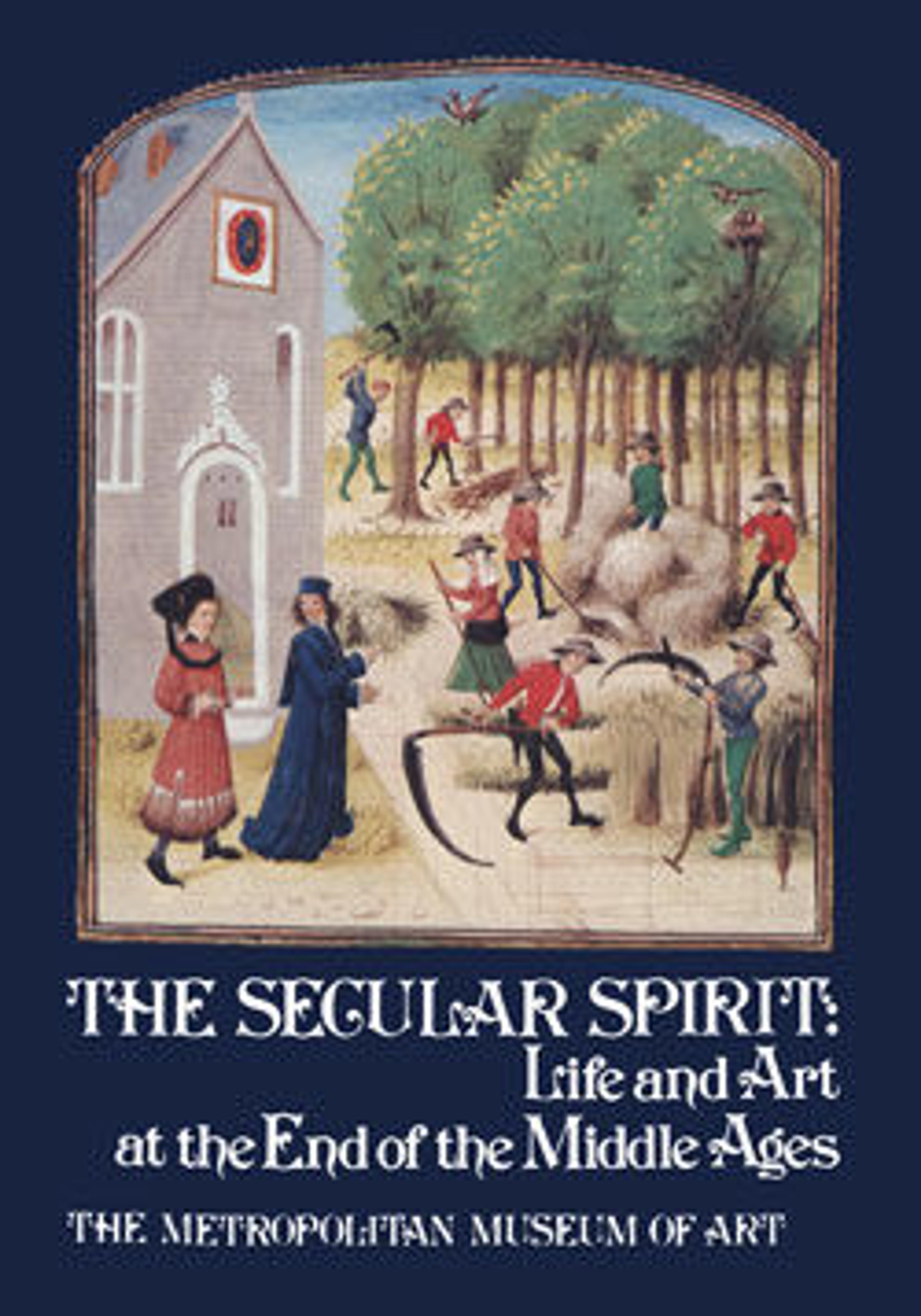Pitcher
Pitchers with exaggeratedly tall necks, beaklike spouts, and large heavy handles were common in fifteenth-century Spain. This unusually large pitcher, probably made in Manises, the principal center of Spanish lusterware throughout the fifteenth century, holds almost eight quarts, and is a rare example of earthenware technique. Although pitchers were common items of tableware, this particular example, when full, would have been much too heavy to wield conveniently. It therefore might have been used for dispensing wine or water to smaller table pitchers, or for serving wine at large banquets. Its large size and ornamentation have also made it a valuable decorative piece, which perhaps explains its fine state of preservation. The decoration, which includes patterns of pseudo-Kufic script, points to the Muslim origin of all Spanish lusterware. The technique, which originated in the Near East, found its way into Andalusia by the tenth century. By the fifteenth century, piracy and the wars with the Christians had prompted many craftsmen to move northward into the region of Valencia, where all artisans, whether Muslims, Mudejares (Muslims living under a Christian king), or Christians, were allowed to work, and where ships sailed freely to their Mediterranean markets, unhindered by pirates.
Artwork Details
- Title: Pitcher
- Date: ca. 1430
- Geography: Made in probably Manises, Valencia, Spain
- Culture: Spanish
- Medium: Tin-glazed earthenware
- Dimensions: Overall: 18 3/8 x 9 in. (46.7 x 22.9 cm)
- Classification: Ceramics
- Credit Line: The Cloisters Collection, 1956
- Object Number: 56.171.146
- Curatorial Department: Medieval Art and The Cloisters
More Artwork
Research Resources
The Met provides unparalleled resources for research and welcomes an international community of students and scholars. The Met's Open Access API is where creators and researchers can connect to the The Met collection. Open Access data and public domain images are available for unrestricted commercial and noncommercial use without permission or fee.
To request images under copyright and other restrictions, please use this Image Request form.
Feedback
We continue to research and examine historical and cultural context for objects in The Met collection. If you have comments or questions about this object record, please complete and submit this form. The Museum looks forward to receiving your comments.
